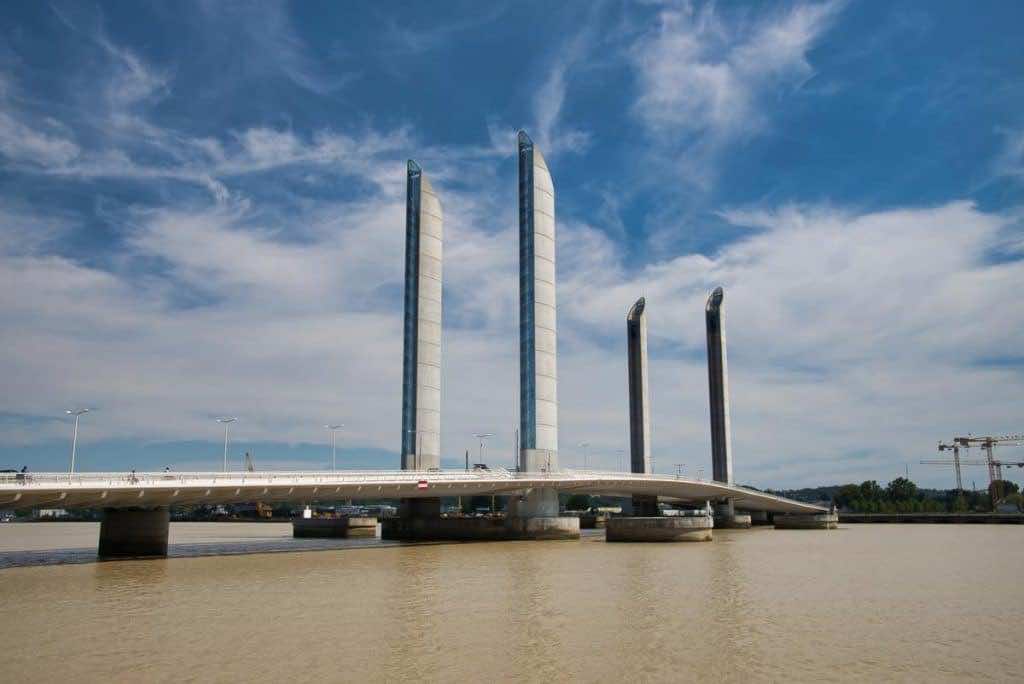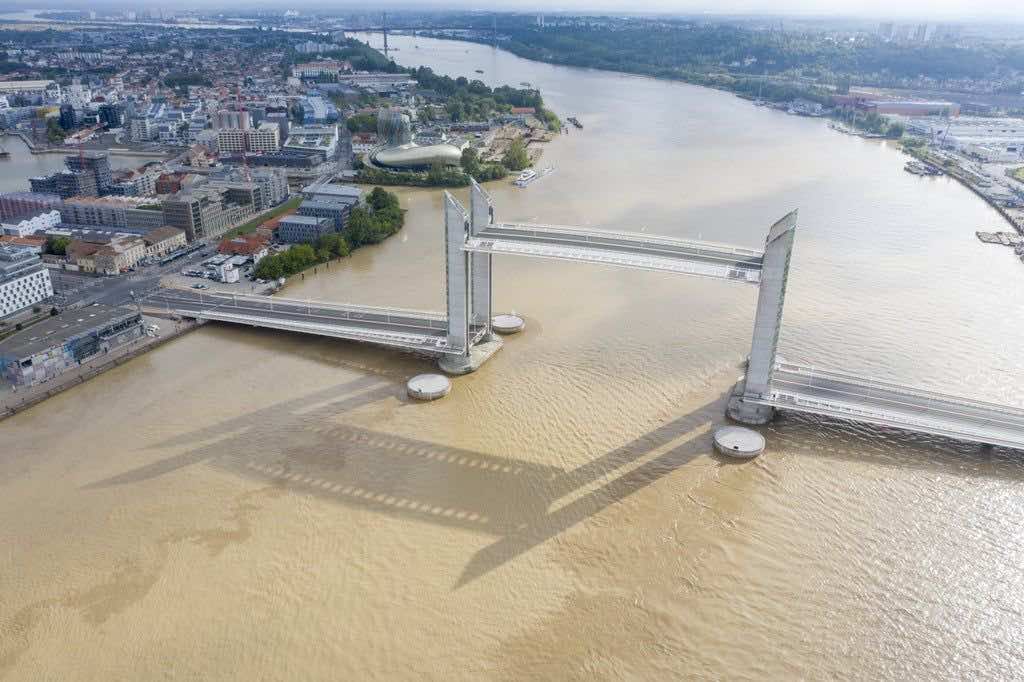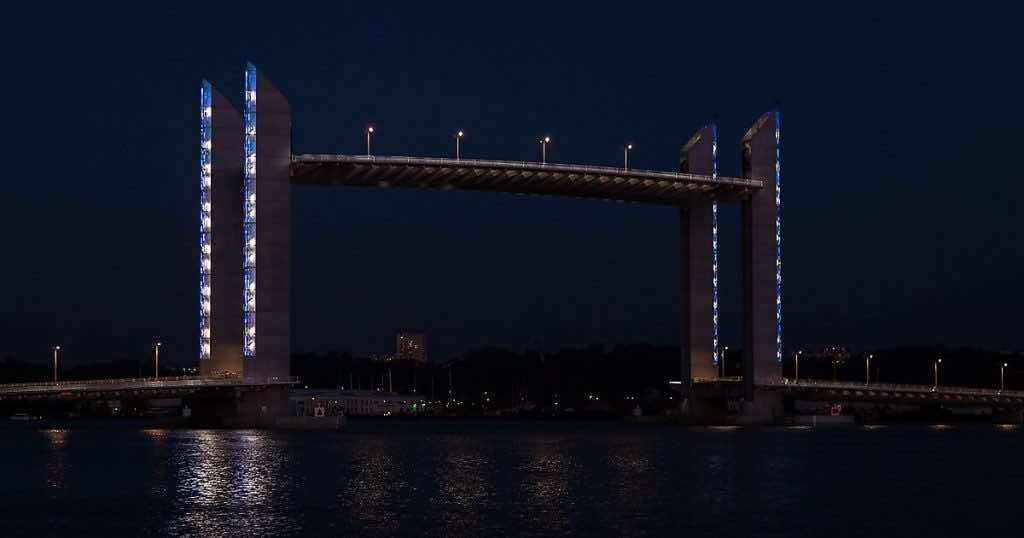The Jacques Chaban-Delmas is a lift bridge, and the fifth one, on the Garonne river in Bordeaux, France. It is an architectural and engineering marvel as it fits almost seamlessly into the surrounding urbanscape and also performs its functions perfectly, not only as a passage across the river but its lift that elevates the bridge deck so that large ships may cross the waterway. At 81 meters high, it is the tallest lift bridge in Europe.

The firm SARL Architecture and Works of Art consisting of Christophe Cheron, Charles Lavigne and his son Thomas Lavigne, are the designers behind this successful infrastructural project. The bridge is 575m long: 433m of which is the main deck and 117m is the central lift span. The central section of the bridge remains in one piece, but lifts vertically up by to 77m in order to let tall ships pass underneath. The weight of the lifted part of the bridge is is around 2,600 tonnes. A pair of pylons each side of the drawbridge sections stretch 77m high and, once opened, the bridge has a 110m clearance for ships sailing through the waterway. The pylons are supported by concrete bases, which are 44m long, 18m wide and 16.5m high. Each base section weighs around 1.5 tonnes. The bridge takes 11 minutes to fully lift or lower into place, but can remain closed to traffic for up to 90 minutes in order to let larger vessels pass through. Operation of the lift span is achieved via high strength wire ropes passing over sheaves that connect the lift span to the counterweights. A wire rope winch drive operating system with electric motor and flux vector regenerative drives hauls in and payout the counterweights, thereby raising and lowering the lift span.

In addition to all the impressive engineering dimensions and operation, the bridge also offers magnificent visual value to Bordeaux and the Garonne River. The Chaban-Delmas bridge has a singular lighting system that transforms the infrastructure into a colourful work of art. Thousands of LED lights are mounted into the pylons and the deck itself and they correspond to marine movements, the marine blue tint announces the high tide and the venoese green tint indicates low tide. All these factors have made the bridge an integral part of the transport network and also a major tourist attraction.



